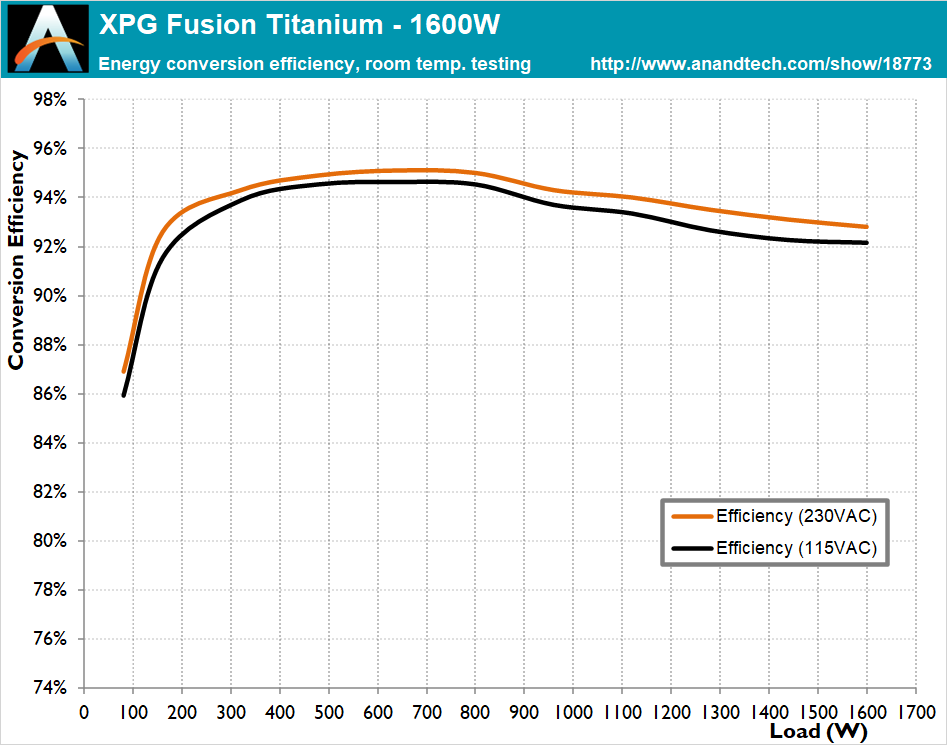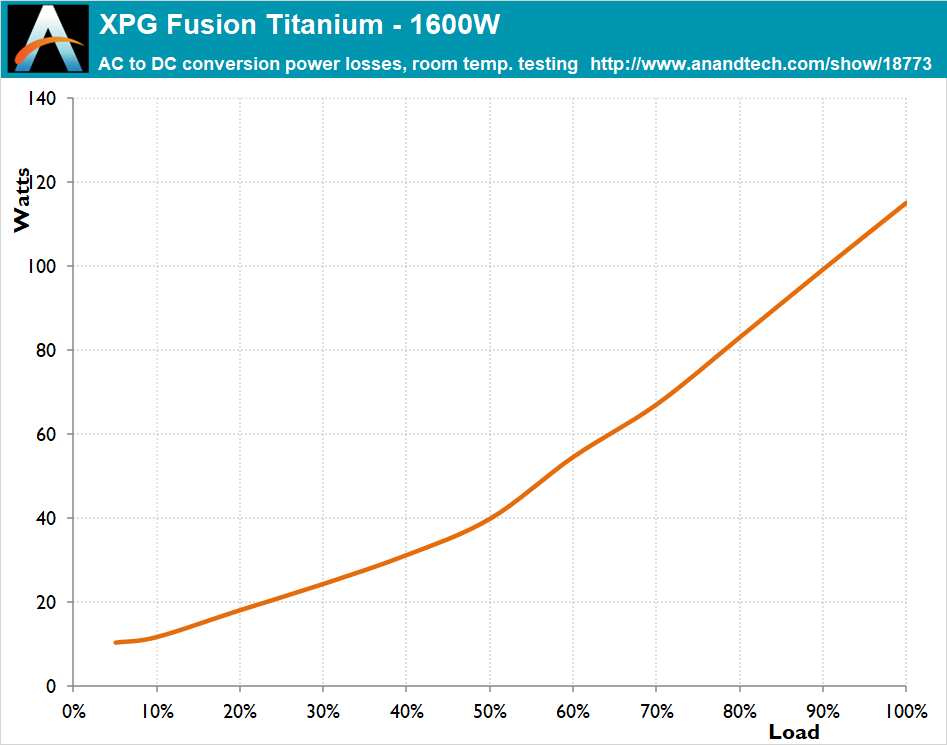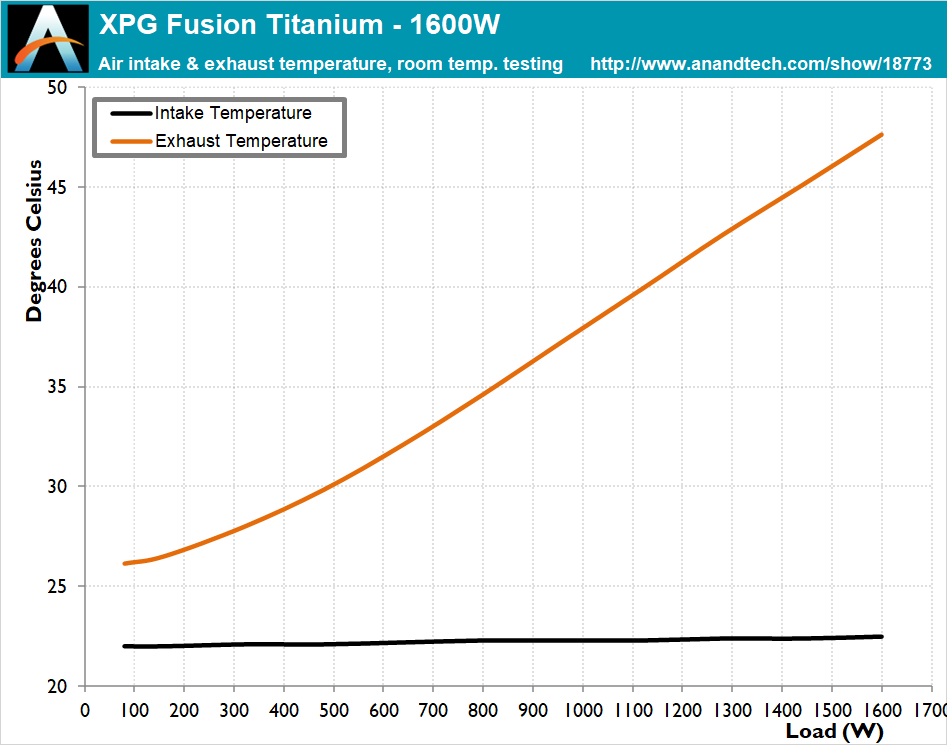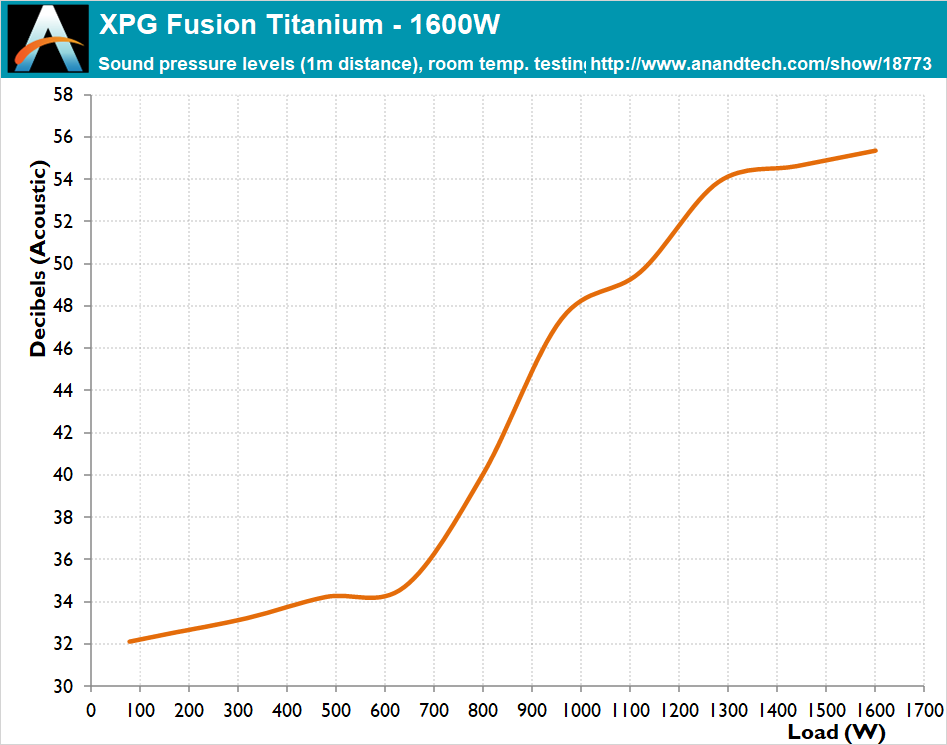The XPG Fusion Titanium 1600 PSU Review: Outrageous Power, Outstanding Quality
by E. Fylladitakis on March 30, 2023 8:00 AM ESTCold Test Results (~22°C Ambient)
For the testing of PSUs, we are using high precision electronic loads with a maximum power draw of 2700 Watts, a Rigol DS5042M 40 MHz oscilloscope, an Extech 380803 power analyzer, two high precision UNI-T UT-325 digital thermometers, an Extech HD600 SPL meter, a self-designed hotbox and various other bits and parts. For a thorough explanation of our testing methodology and more details on our equipment, please refer to our How We Test PSUs - 2014 Pipeline post.
Most manufacturers target their designs to meet the 80Plus certification requirements with an input voltage of 115 VAC due to the lower standard requirements. The XPG Fusion 1600 does meet the 80Plus Titanium requirements with an input voltage of 115 VAC, reaching a top efficiency of 94.7% and an average nominal load range (20% to 100% of the unit's capacity) efficiency of 93.5%. Switching the input voltage to 230 VAC does increase its average efficiency to 94.1%, but the improvement is not substantial enough to meet the 80Plus Titanium standard thresholds. Nonetheless, the XPG Fusion 1600 undoubtedly is highly efficient, especially when the load is very low, which is crucial with a product with that high a power output.
The stock cooling profile of the XPG Fusion 1600 is well-balanced between performance and acoustics, albeit a bit aggressive at higher loads. We can see that the fan turns on and spins slowly, practically inaudibly, as long as the load is low. It is very impressive that the fan hardly speeds up at all while the load is below 50% and that, in this case, is an output of 800 Watts. Any typical gaming PC would not be capable of forcing the XPG Fusion Titanium to substantially increase its fan speed. When the load is higher than 800 Watts, the losses are enough to warrant a faster fan speed, with the control circuit speeding up the fan as the load increases. The profile is programmed to shoot the fan at maximum speed, even though the temperature readings do not warrant that. Users can also adjust the cooling profile via the software.















17 Comments
View All Comments
Oxford Guy - Thursday, March 30, 2023 - link
‘These designs are not the quietest’Zero surprise that another high-rpm ball bearing fan has been used.
CindyYin - Thursday, March 30, 2023 - link
What brand of capacitors are used for the XPG Fusion Titanium 1600 PSU?ballsystemlord - Saturday, April 1, 2023 - link
Nippon Chemi-Con and Rubycon. They mentioned it in the article. Now about how people are supposedly literate in our modern age...ballsystemlord - Saturday, April 1, 2023 - link
For a unit that costs $750, I'd have thought it would run at a much lower noise level. Maybe they could use larger heatsinks next time?Oxford Guy - Saturday, April 15, 2023 - link
Ball bearing fans become louder with time, which is something reviewers never mention, too.And... if they're dropped they can be damaged. As far as I know, the more modern bearings don't have that issue.
The one thing ball bearing fans seem to do best is static pressure, though.
Eliadbu - Monday, April 3, 2023 - link
Very Large, not that quiet, very expensive.All of that for have a 1600 watt titanium PSU with ATX 3.0 and 2 12vhpwr cables. Not worth it imo but some people may look differently on this.
Also no premade cables from cablemods for their PSUs which is a down.
drajitshnew - Wednesday, April 5, 2023 - link
And all the components which enable a compact PSU but the the PSU is a giant anyway. Let's be honest this product belongs in a showcase not a computer. Along with the 15A limitation, if you really NEED the power an just get an 2KW titanium redundant unit